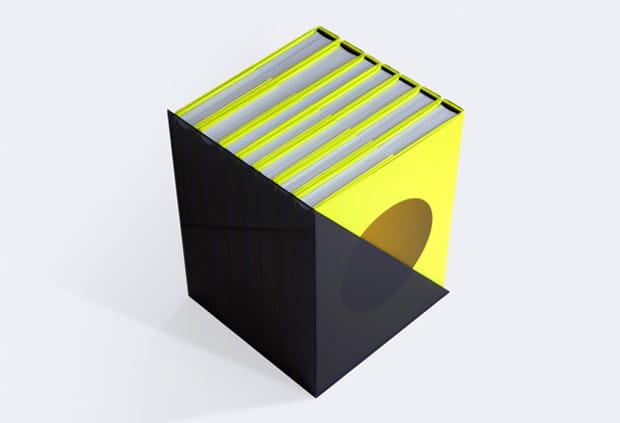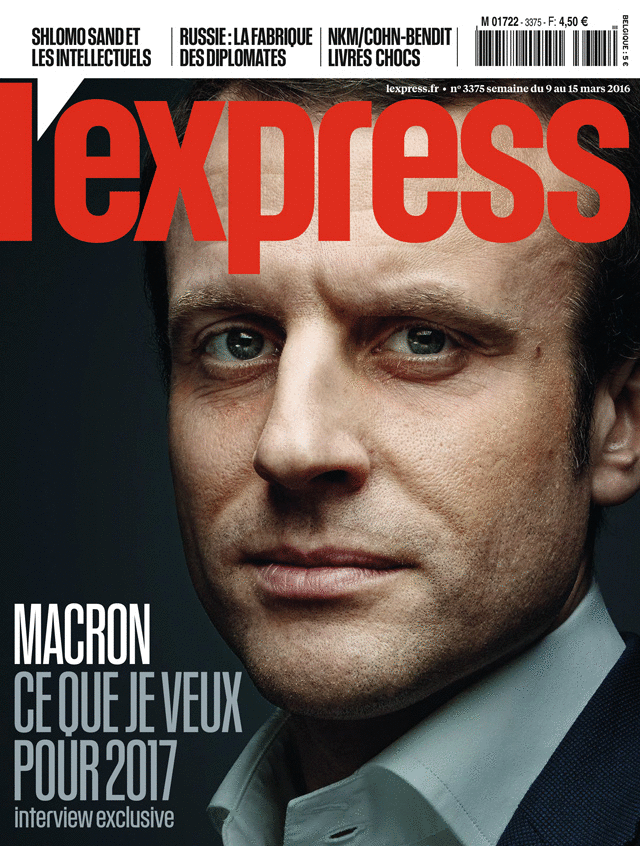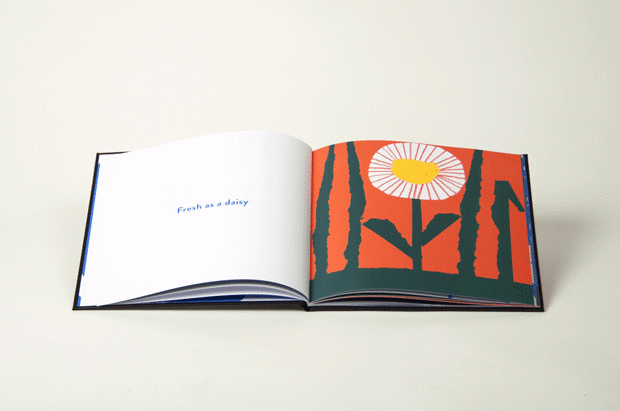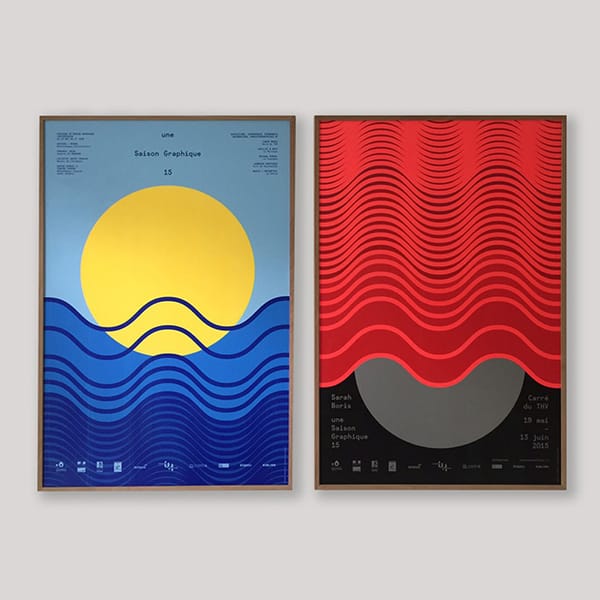How do you translate the experimental, innovative food of the renowned Michelin 3-star restaurant elBulli into a book? We hear from William Hall who has done just that with a seven-volume publication for Phaidon...
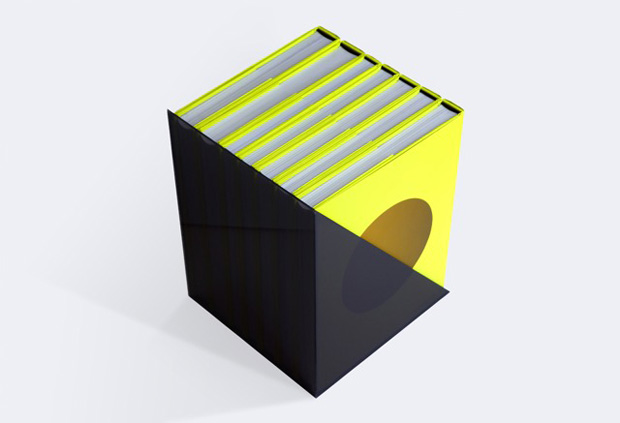
What was it like working with genius chef Ferran Adrià, founder of elBulli, on this book?
Ferran was a tremendously exciting person to work with. It’s great fun to walk with him around Barcelona, where they are immensely proud of him and he is treated like a rock star. People run up to get a signature or a selfie.
He prefers not to speak English instead using staccato Catalan coupled with an energetic series of gestures. I made a note of what he was doing during one of our meetings, continuously scribbling to keep up: holding chest, clapping hands, hands on hips, hands out wide, left hand under right arm, right hand circular motions, waving, pointing… It’s a whirlwind of energy that only stops when Ferran sits down to listen for thirty seconds, his arms crossed tightly, leaning back in his chair. Then he jumps up with a new burst of energy and continues with the same urgency. Always serious, earnest, focused, alert.
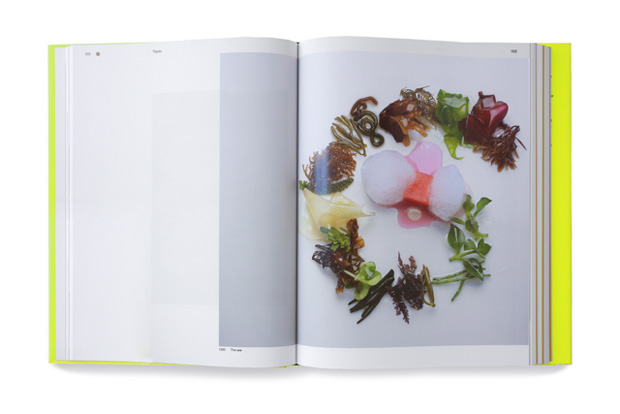
Have you ever been lucky enough to eat at elBulli?
I went there in 2011, which was the year they had two million applications for 8,000 covers (seats for dinner). I think that’s 50 covers a night for six months, because they closed for half the year and there was only one dinner service, no lunch.
I didn’t eat in the restaurant as a regular customer, but Ferran invited me to join him for the elBulli ‘Family Meal’. This is the daily three course staff meal served at 6pm. Ferran made a book on the subject with Phaidon.
Ferran said to me: “You know William, people say it is very difficult to eat at elBulli, but no-one [who doesn’t work here] has ever joined us for the family meal,” so that felt like some sort of compensation.
Half way through our meal, Ferran instructed his staff to “turn this rubbish off and get the football on.” He’s a big Barcelona fan I also ate with Ferran at Tickets, his restaurant in Barcelona, which is heavily influenced by the work of elBulli, replete with spherified olives and candy floss trees – though to be honest he was more interested in watching Barcelona in the Champions League. There is a wall of televisions behind bar in Tickets which shows food preparation. Half way through our meal, Ferran instructed his staff to “turn this rubbish off and get the football on.” He’s a big Barcelona fan.
Back at the kitchen of elBulli the thing I remember most vividly is seeing all the stagiaires (the interns are called stagiaires, from the French for trainee) dividing tubs of peas into three sizes, small, medium and large.
How did you rise to the challenge of representing Adrià’s legendary levels of innovativeness and imagination?
There are around 750 recipes in the book, all created between 2005 and 2011. Ferran’s creative approach is discernible in each one and our role was really to allow this be communicated and celebrated rather than obfuscated or complicated by additional detail.
It wasn’t possible to recreate 750 dishes so we had to use extant photography from elBulli. The images are quite varied, with different backgrounds and lighting. That exacerbated the need to provide a controlled and undemanding canvas that would not distract or detract from the genius of the dishes.
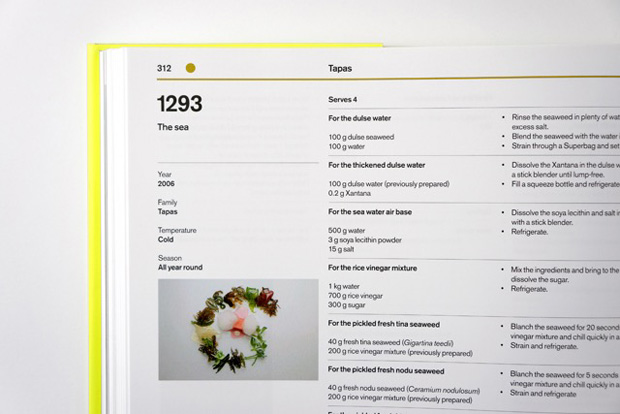
How much input (if any) did he have in the design concept?
Ferran had almost complete control over the content, but not how it was presented on the page. That said, he was very involved in the design process. Although he sought to change very little, I am certain he would have vetoed anything he thought had the wrong tone.
What were the special challenges involved in handling the content?
The main issue was in presenting extremely complicated recipes with total clarity and coherence. Then doing the same with the very complicated final volume (there are six recipe annuals, and this seventh volume), entitled ‘Evolutionary Analysis’, which features exhaustive information regarding every aspect of the running of elBulli. From its organisation and philosophy, to the products and technology used (and sometimes invented) there, to the ‘elaborations’ (these are alternative resolutions to their research, which often didn’t make it to a final dish).
The names and ingredients are incredibly evocative. For example, in 2005 they created ‘peach water’ – a highly concentrated peach flavour. The techniques learnt for that led to ‘peach paper’, and to the dish ‘pea jelly with banana and lime ice cream’, and to a dish called ‘peach water with pu-erh tea spherical marbles’ and to ‘chestnut water’.
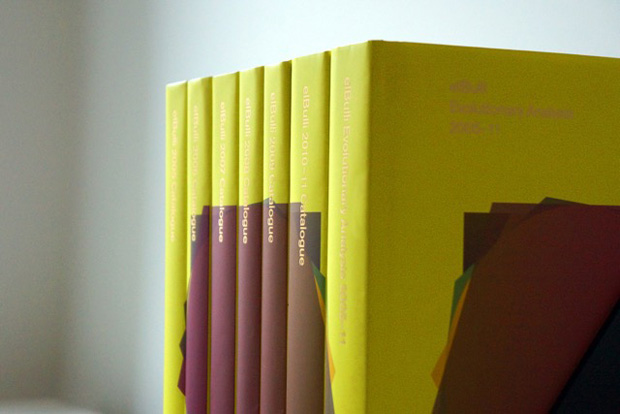
Have you ever tried cooking one of the recipes?
I have never tried cooking one. The recipes are extremely complicated and most require strange ingredients and apparatus rarely found in even the best-equipped domestic kitchens.
Is this a book designed to be cooked from or is it an artefact to be treasured?
As well as being a handsome objects, and befitting of the world’s best and most influential restaurants, the books are a fascinating insight into how elBulli operates and its creative output, so as a source of inspiration and as an object I think you could argue it is an artefact to be treasured.
You don’t buy a book on Serra because you want to learn how to sculpt It certainly isn’t designed to be cooked from in a domestic kitchen. It’s too big and too precious. It’s mostly designed to be studied. But to ensure the comprehension of the recipe it was vital that in principle – and in practice – it would be possible to use.
Most people buying and using this book will be professional chefs, and some of those will follow the recipes and make the dishes. The vast majority of users won’t cook a single thing. But as the Publisher of Phaidon, Emilia Terragni says, “You don’t buy a book on Serra because you want to learn how to sculpt”.
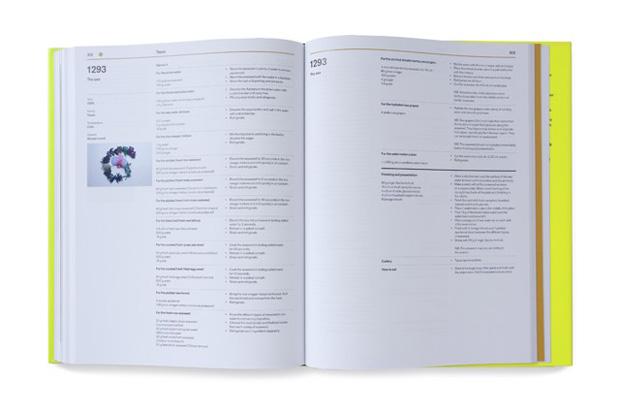
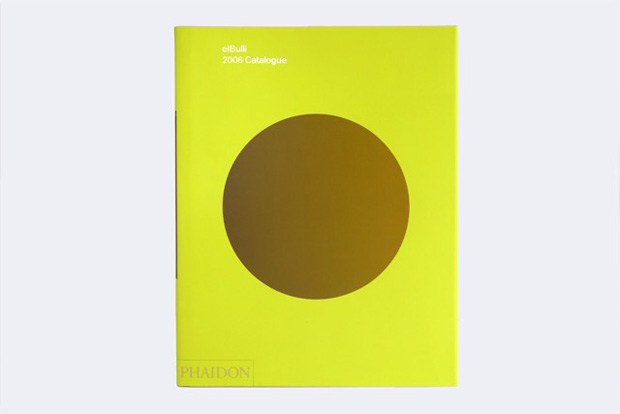
Does this publication take books about food into another league?
The point about the catalogues is that Ferran is demonstrably at the top of his profession, and every year he published his experiments and his findings. That’s an extraordinary thing to do. To give away everything you’ve learned, immediately, in such a labour intensive realm.
It’s important to understand that Ferran’s research is both about ingredients – their origin, their substance – and processes. What happens to this foodstuff if we steam, boil, fry, extrude, pressurise, vapourise it, etc? What’s happening if we take that sweet element and that sour element? What if we change that solid sour element for this liquid sweet element. It’s never-ending and the results are breathtaking.
The titles of the dishes are incredibly evocative and inspiring. From the last year, some sample recipe titles are: ‘Apple mojito sandwich’, ‘Soya matchstick with yuzu and miso’, ‘Squash sea urchin in squash escabeche’, ‘Hare with hare Bolognese and blood’, ‘Yoghurt samosa with honey’, ‘Tea and lime lump’. But the titles only hint at the presentation – the colour, the form, the texture, not to mention the taste and the smell.
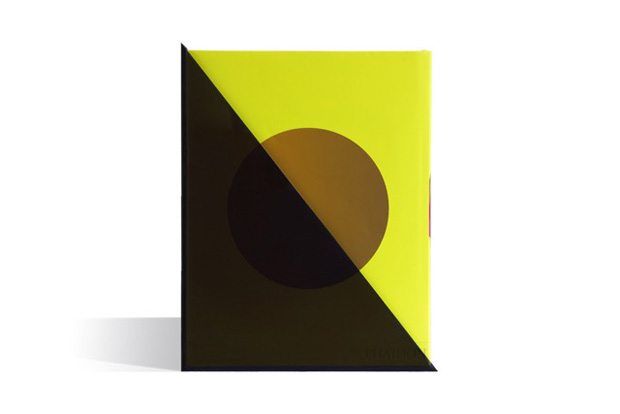
Tell us about the technical production specifications of the books and box…
The books are simple five-colour projects (CMYK plus a spot metallic). Phaidon wanted a slipcase and our initial design was a golden perforated metal – related to elBulli’s own specially made mesh tableware. Unfortunately this proved too expensive and we reverted to the triangular black Perspex design.
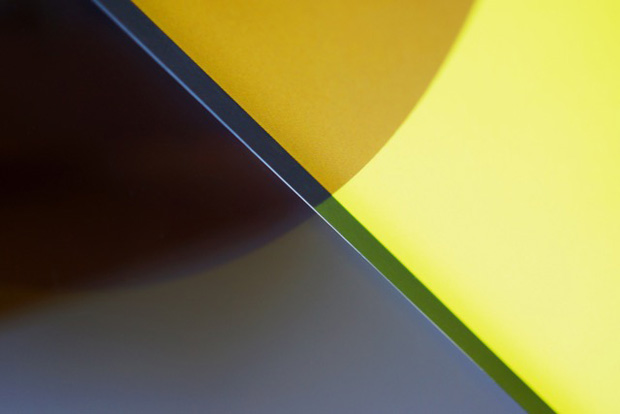
elBulli 2005–2011: Every recipe from the last seven years of the world's most creative restaurant
By Ferran Adrià, Juli Soler, Albert Adrià
Published by Phaidon
See more of William's work here

